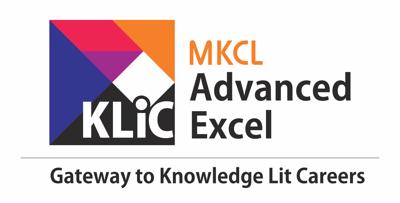- Understanding the fundamentals of Excel functions and formulas.
- Applying various functions in formulas for data manipulation and analysis.
- Utilizing mathematical functions for statistical analysis and calculations.
- Implementing financial functions for financial analysis and calculations.
- Leveraging data functions for data manipulation and extraction.
- Utilizing useful functions for error checking and dynamic formula creation.
- Performing lookup operations using different lookup functions.
- Handling date and time data effectively using advanced date and time functions.
- Manipulating text data using text functions for extraction, manipulation, and formatting.
- Understanding and utilizing arrays for complex data analysis.
- Using what-if analysis tools to analyze different scenarios and make informed decisions.
- Creating and merging scenarios to evaluate various possibilities and outcomes.
- Generating scenario summaries and pivot table reports for comprehensive analysis and presentation.

Data Analysis Techniques using Microsoft Excel
Master Excel tools for organizing, analyzing, and interpreting data. Focus on practical applications like sorting, filtering, and charting.
Introduction
What you'll learn ?
- Apply advanced Excel functions and formulas to manipulate and analyze data effectively.
- Utilize mathematical functions for statistical analysis and calculations.
- Perform financial analysis and calculations using financial functions.
- Manipulate and extract data efficiently using data functions.
- Implement error checking and dynamic formula creation using useful functions.
- Conduct lookup operations to retrieve data from different sources.
- Handle date and time data effectively using advanced date and time functions.
- Manipulate text data for extraction, manipulation, and formatting using text functions.
- Analyze scenarios and make informed decisions using what-if analysis tools.
- Create and merge scenarios to evaluate various possibilities and outcomes.
- Generate scenario summaries and pivot table reports for comprehensive analysis and presentation of results
Syllabus
- Introduction to Functions, Common Types of Arguments, Parts of Functions
- Advanced Aspects of Functions, Searching for a Function
- Using the Functions
- Using the SUM and AVERAGE Functions
- Using the IF Function
- Analysing the IF Function
- Using the OR Function
- Using the AND Function
- Using the OR Operator Function
- Nesting the IF Statement
- Analysing the Nested IF Function
- Using the NOT Function
- Using the SUMIF Function
- Using the SUMIFS Function
- Using the AVERAGE and MEAN Functions
- Using the MODE Function
- Using the MEDIAN Function
- Area and Volume Calculations
- Rounding Decimal Places
- MOD and INT Functions and Uses
- Using the Random Function
- Using the RANDBETWEEN Function
- EMI Calculations
- Calculating Monthly Instalment and Interest
- Calculating Principal Amount
- Calculating Balance Amount
- Using PV Function
- Using FV Function
- The CHOOSE Function
- Using the MATCH Function
- Using the INDEX Function
- Using the MATCH and INDEX Functions Working Together
- The CELL Function and Determining File or Sheet Names
- Using the ISBLANK Function
- Error Checking Using the ISERROR Function
- Error Checking Using the IFERROR Function
- OFFSET Function: Display the Value in Cell
- OFFSET Function: Calculating a SUM
- OFFSET Function: Creating a Dynamic Named Range
- Using the INDIRECT Function
- INDIRECT Function to Build Dynamic Formulas
- Using the LOOKUP Function
- Using the VLOOKUP Function
- Using the HLOOKUP Function
- VLOOKUP in Live Action
- Lookups Nested Within Lookups
- Working with Date and Time in Excel
- Using the YEAR, MONTH, DAY, HOUR, MINUTE AND SECOND Functions
- Calculation Between Two Dates
- Calculating Person’s Age Using Excel
- Using Functions to Serialize Date
- Using the TIMEVALUE Function
- LEFT: Text Manipulation
- RIGHT: Text Manipulation
- LEN: String Extractions
- TRIM: String Extractions
- Changing Case Function
- CONCATENATE: Building Strings From Multiple Cells
- REPLACE and SUBSTITUTE: Two More String Manipulation Function
- Using the FIND and MID Text Functions
- FIND and MID: Text Functions Working Together
- Formatting Numeric and Date Values Using TEXT
- IF ARRAY Formulas
- Transpose-Shift
- What-If Analysis Tools
- Using Goal Seek
- What are Scenarios?
- Possible Scenarios
- Naming Cells
- Creating a Scenario
- Second Scenario
- Third Scenario
- Viewing a Scenario
- Quick Access to Scenarios
- Merging Scenarios
- Other Scenarios
- Merging Process
- The Merge Scenarios Window
- Types of Scenario Summaries
- Creating Scenario Summary
- Understanding Scenario Summary
- Creating Scenario PivotTable Report
- Modifying Scenario PivotTable Reportc
Certificate
- MKCL provides certificate (for 30/60/90 hours courses) to the KLiC learner after his/her successful course completion.
Academic Approach
The Academic Approach of the course focuses on the “work centric” education i.e. begin with work (and not from a book !), derive knowledge from work and apply that knowledge to make the work more wholesome, useful and delightful. The ultimate objective is to empower the Learner to engage in socially useful and productive work. It aims at leading the learner to his/her rewarding career as well as development of the society.
Learning methodology
- Learners are given an overview of the course and its connection to life and work.
- Learners are then exposed to the specific tool(s) used in the course through the various real-life applications of the tool(s).
- Learners are then acquainted with the careers and the hierarchy of roles they can perform at workplaces after attaining increasing levels of mastery over the tool(s).
- Learners are then acquainted with the architecture of the tool or Tool Map so as to appreciate various parts of the tool, their functions and their inter-relations.
- Learners are then exposed to simple application development methodology by using the tool at the beginner’s level
- Learners then perform the differential skills related to the use of the tool to improve the given ready-made outputs.
- Learners are then engaged in appreciation of real-life case studies developed by the experts.
- Learners are then encouraged to proceed from appreciation to imitation of the experts.
- After imitation experience, they are required to improve the expert’s outputs so that they proceed from mere imitation to emulation.
- Finally, they develop the integral skills involving optimal methods and best practices to produce useful outputs right from scratch, publish them in their ePortfolio and thereby proceed from emulation to self-expression.
Evaluation Pattern
Evaluation Pattern of KLiC Courses consists of 4 Sections as per below table:
| Section No. | Section Name | Total Marks | Minimum Passing Marks |
|---|---|---|---|
| 1 | Learning Progression | 25 | 10 |
| 2 | Internal Assessment | 25 | 10 |
| 3 | Final Online Examination | 50 | 20 |
| Total | 100 | 40 | |
| 4 | SUPWs (Socially Useful and Productive Work in form of Assignments) | 5 Assignments | 2 Assignments to be Completed & Uploaded |
MKCL’s KLiC Certificate will be provided to the learner who will satisfy the below criteria:
- Learners who have successfully completed above mentioned 3 Sections i.e. Section 1, Section 2 and Section 3
- Additionally, learner should have completed Section 4 (i.e. Section 4 will comprise of SUPWs i.e. Socially Useful and Productive Work in form of Assignments)
- Learner has to complete and upload minimum 2 out of 5 Assignments
Courses Fee Structure from 01 July, 2025 Onwards
KLiC 30 hour course fee applicable from 01 July, 2025 all over Maharashtra| KLiC Course Duration | MFO: MKCL Share (Including 18% GST) |
ALC Share (Service Charges to be collected by ALC) |
|---|---|---|
| 30 hours | Rs. 300/- | Rs. 1,500/- |
Important Points:
* Above mentioned fee is applicable for all Modes of KLiC Courses offered at Authorised Learning Center (ALC) and at Satellite Center
* Total fee is including of Course fees, Examination fees and Certification fees
* MKCL reserves the right to modify the Fee anytime without any prior notice
* Above mentioned fee is applicable for all Modes of KLiC Courses offered at Authorised Learning Center (ALC) and at Satellite Center
* Total fee is including of Course fees, Examination fees and Certification fees
* MKCL reserves the right to modify the Fee anytime without any prior notice
